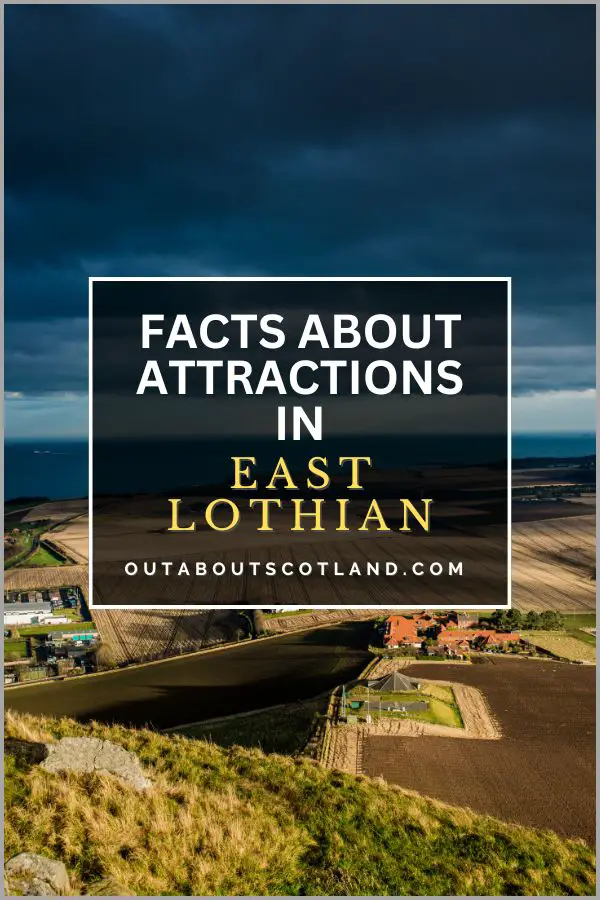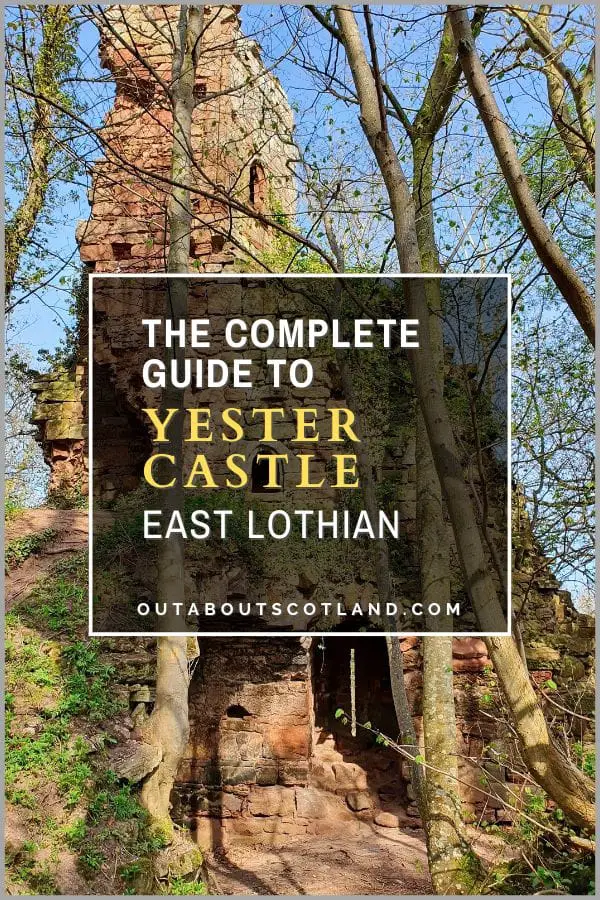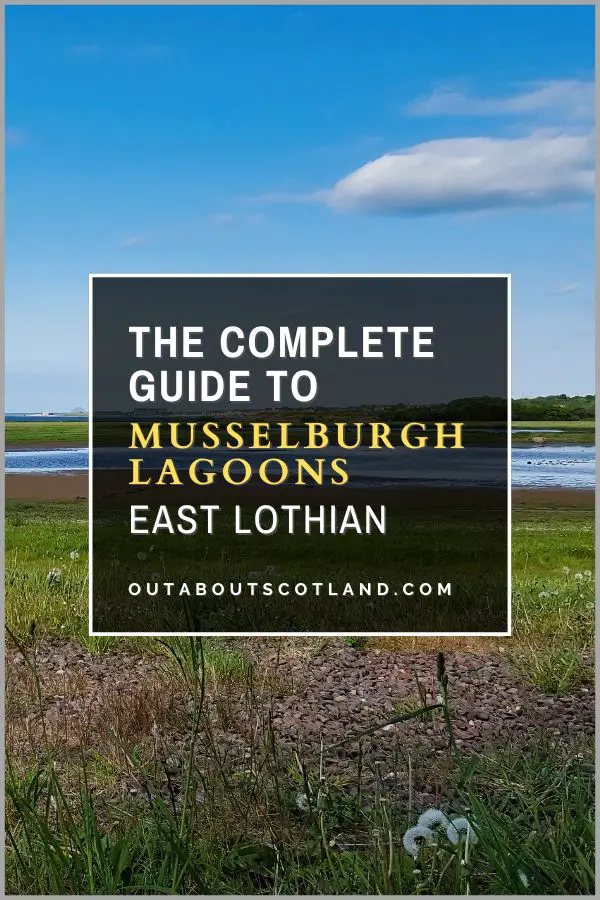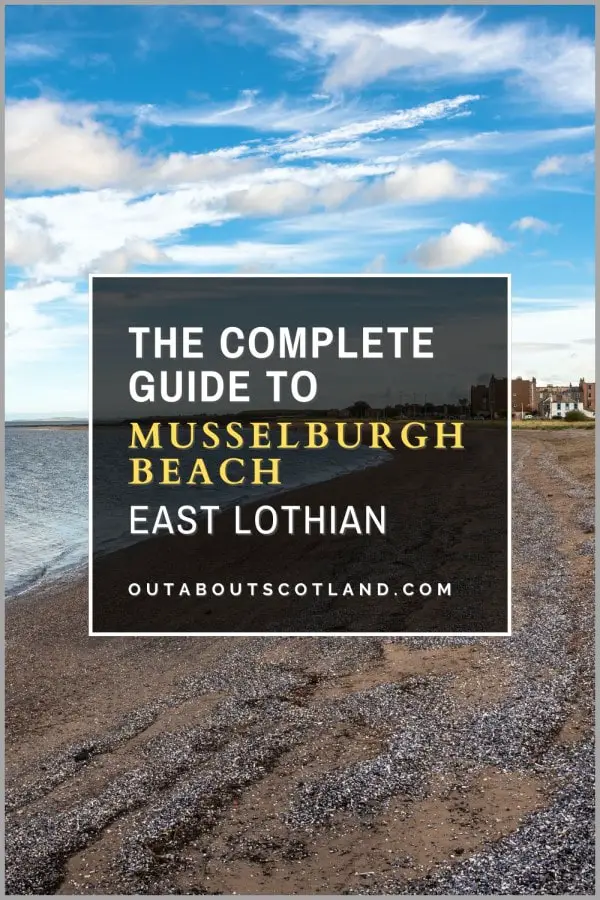East Lothian is an often-overlooked Scottish county that offers visitors a combination of rolling countryside, golden beaches, dense woodlands, quaint villages, and scenic nature reserves.
The county is also home to numerous tourist attractions, ranging from ancient castles to modern family fun parks. Discover the best things to do in East Lothian for families with this guide, which features an overview of the top places to visit along with visiting tips and advice.
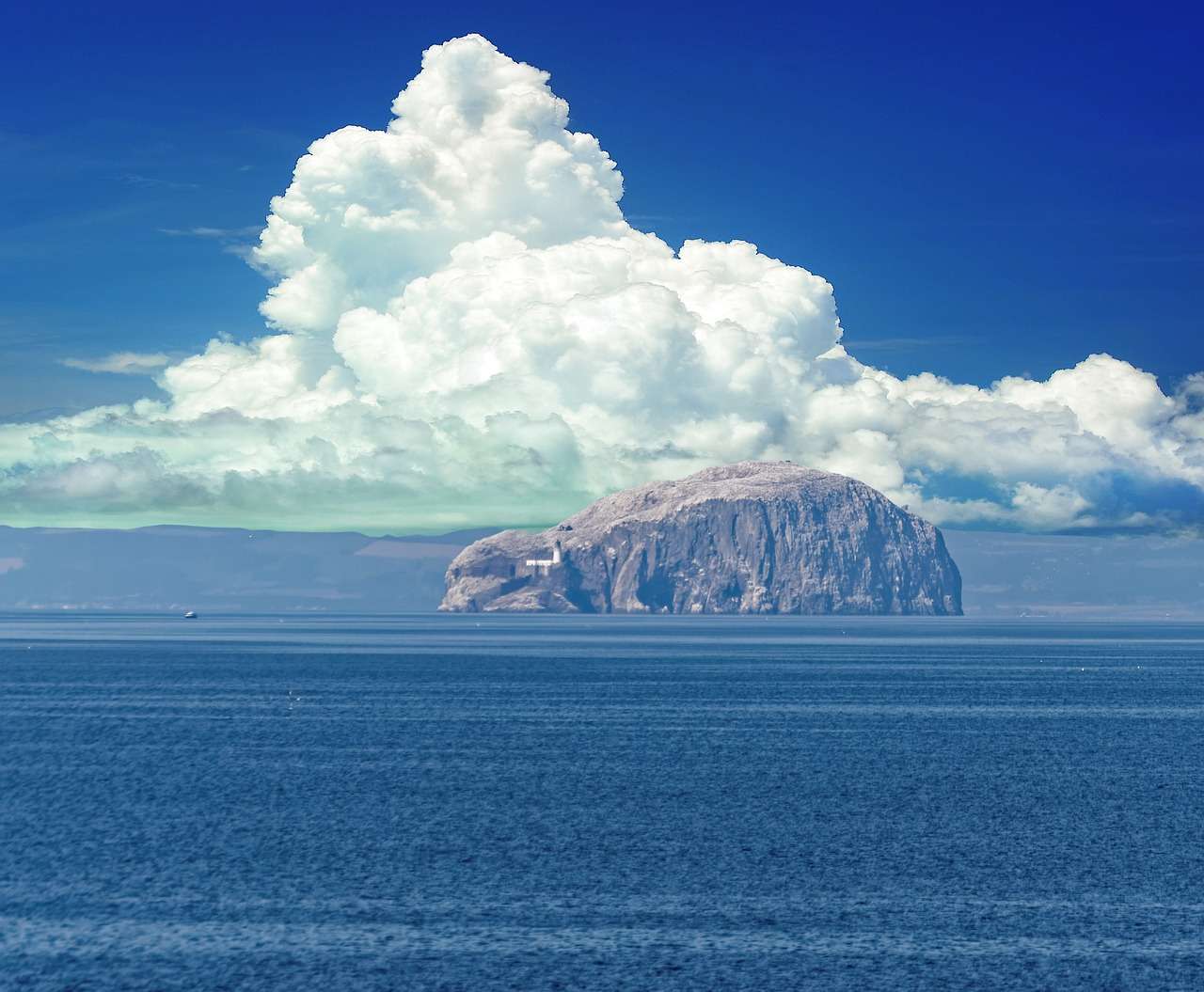
Things to Do in East Lothian for Families
East Lothian may not be the first place that springs to mind when planning a trip to Scotland, but this is one underrated county that deserves more recognition than it gets. Located just a few miles east of Edinburgh, East Lothian sits alongside Midlothian on its western border and stretches south to join the Scottish Borders, making it a superb region to explore South Scotland.
One of Britain’s finest stretches of coastline surrounds the county on its northern and eastern edges, where you can find dozens of breathtaking beaches, the majority of which are exceptionally clean and situated inside shallow bays that are ideal for water sports.
Moving inland, you’ll notice the majority of the landscape is arable and only lightly populated, so it’s possible to find hundreds of superb off-grid countryside walks within an hour’s drive of the capital. There are plenty of attractions to visit if Scotland’s notorious weather means the beach is off-limits, and you’re bound to find something to do, whether you’re interested in historic buildings, wildlife, museums, or family-friendly parks.
Highlights include the Scottish Seabird Centre in North Berwick, The National Museum of Flight in East Fortune, East Links Family Park near Dunbar, and Tantallon Castle near North Berwick, in addition to East Lothian’s stunning Lammermuir Hills and its pretty lost-in-time villages.
If you’d like more information about East Lothian, take a look at this article: The Best Things to Do in East Lothian or check out the articles in The Lothians archives.
Protect Your Family From Scotland's Biting Midges
- Powerful, reliable protection for up to 8 hours
- Water- and sweat resistant
- Repels midges, mosquitoes, horse flies, sand flies, fleas and ticks
- Safe for use on adults, children over 30 months and pregnant women
- Non-sticky, moisturising with a pleasant fragrance
- Packaging may vary
Athelstaneford National Flag Centre
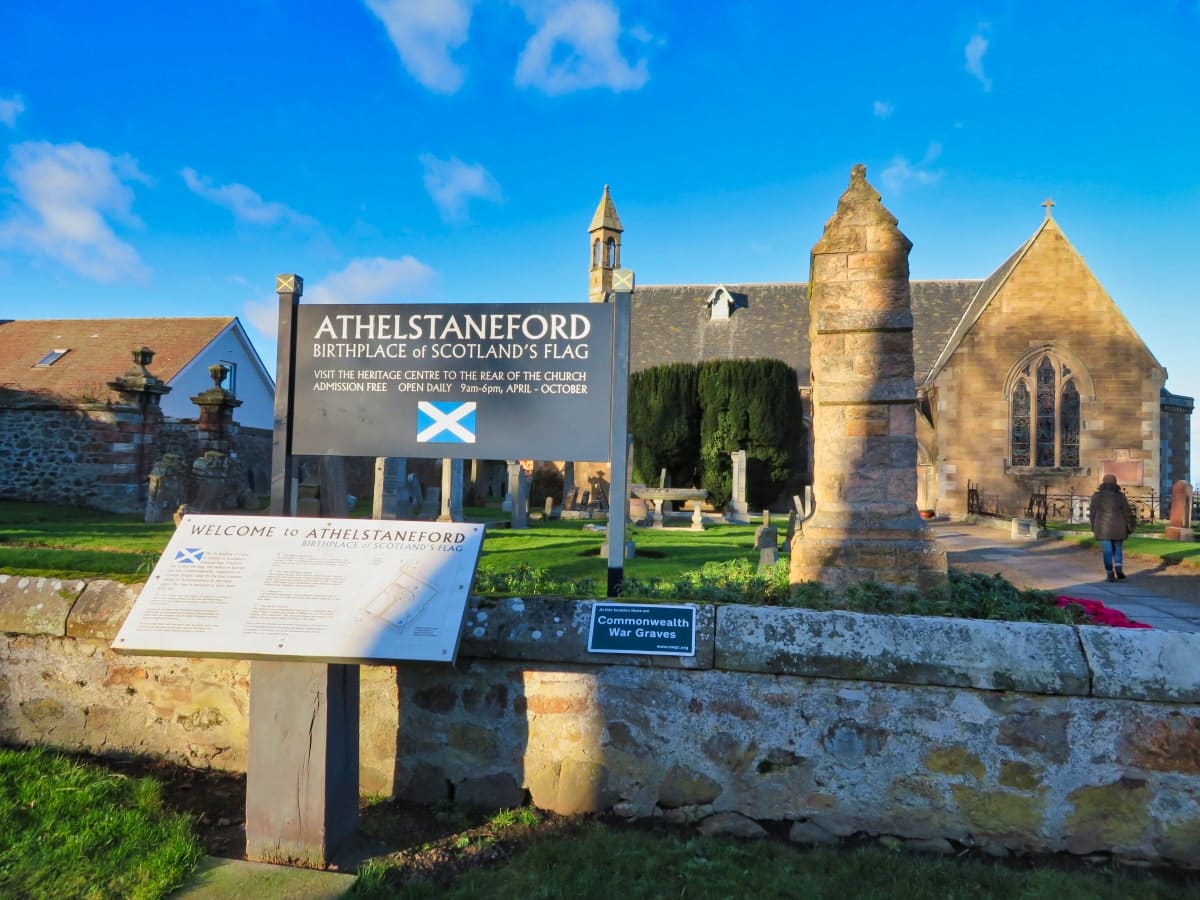
Out About Scotland Complete Guide to The National Flag Centre
Athelstaneford is a tiny village set deep in the heart of East Lothian that would be entirely forgettable were it not for a historic event that was integral to Scotland becoming the nation it is today. If you visit the area, you’ll immediately notice how flat it is, and although the rolling Lammermuir Hills lie to the south, everything north towards the North Sea is low-lying farmland, so it’s possible to view the landscape for miles in all directions.
This flat landscape was the setting of a fierce battle in AD 832, when an army of Scots fought against a much larger army of Anglo-Saxons. Before the conflict began, the Scottish king prayed for victory, and as he looked up to the heavens, he saw an enormous cross of white clouds set against the deep blue of the sky.
Taking this as a sign from St. Andrew (St. Andrew was crucified on an X-shaped cross), the Scots won the battle and thereafter took the sign of a white cross on a blue background as their national flag. The flag, known as The Saltire, is commemorated in a small exhibition behind the village church in Athelstaneford, which features a number of information panels that retell the story of the battle and how Scotland adopted its national flag.
It’s not exactly the biggest attraction in the world but it’s certainly an interesting place to visit if you’re in this part of East Lothian.
As a top tip, I recommend following the signposted path opposite the church which leads across farmland to the Hopetoun Monument. The monument is a large tower with a viewing platform that offers unmatched views across the countryside.
It was built in 1824 as a tribute to the 4th Earl of Hopetoun, and it’s pretty much impossible to miss as it’s 30 metres tall. From the top, you’ll see Berwick Law (listed below), and across the Firth of Forth you’ll see Fife—at least on a clear day. Other attractions nearby include the historic Preston Mill, Hailes Castle and the National Museum of Flight.
Berwick Law
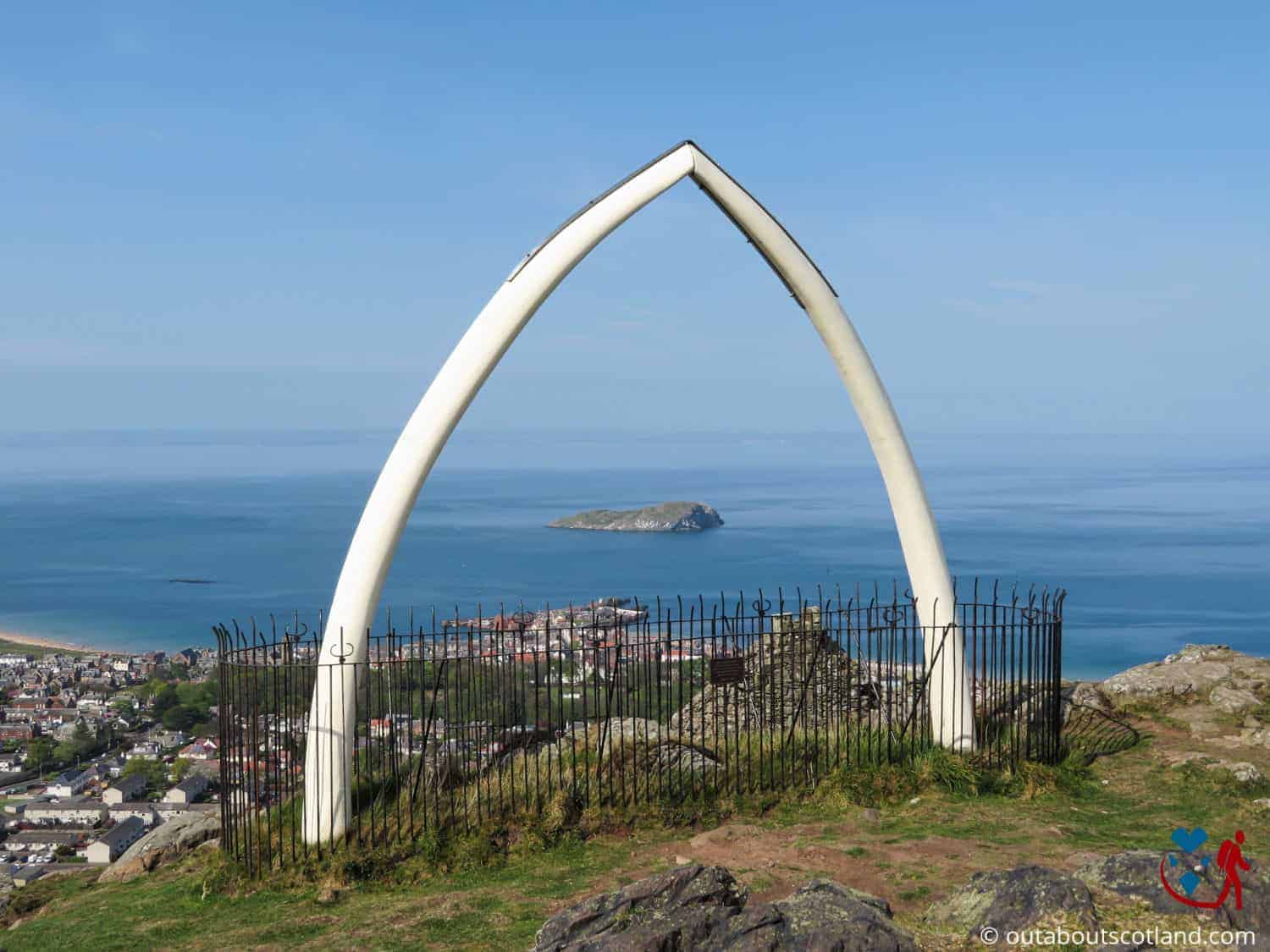
Out About Scotland Complete Guide to Berwick Law
The hulking mass of Berwick Law dominates the southern aspect of the attractive coastal town of North Berwick. This cone-shaped hill is the remnant of a long-extinct volcano and walking to the summit is one of the best outdoor activities in East Lothian.
Getting there isn’t difficult, as the hill is impossible to miss once you reach the town, and there’s a good-sized car park at the foot of the hill, so you won’t have to worry about finding a space.
At 187 metres, Berwick Law offers a moderately steep climb but it’s nothing that will bother most people, though be aware much of the track to the top is grass and bare soil which turns into a bit of a muddy mess after a rainfall.
If you visit on a sunny day, though, you’ll find the views from the top are spectacular and more than make up for a little bit of effort. There are superb views in all directions, but looking north towards the Firth of Forth is the main attraction, especially with the islands of Craigleith and Bass Rock so close by. The view of Bass Rock, in particular, is worth packing your binoculars for, as it’s a stunning sight in the summer when it’s full of flocking seabirds.
If you’d like to see it up close, I recommend heading into North Berwick and visiting the Scottish Seabird Centre, which runs regular trips to the rock on a catamaran and inflatable boats.
Before leaving Berwick Law’s summit, take the time to have a look at two points of interest which are an old WWII bunker and a whalebone. The bunker was used as a lookout post and is part of a long line of similar military stations that were built on Berwick Law over hundreds of years.
The whalebone commemorates Scotland’s (thankfully) abandoned whale hunting industry that was instrumental in bringing prosperity to Edinburgh; read my Complete Guide to Leith for more information about it.
Book Tours in Scotland
Dunbar Harbour
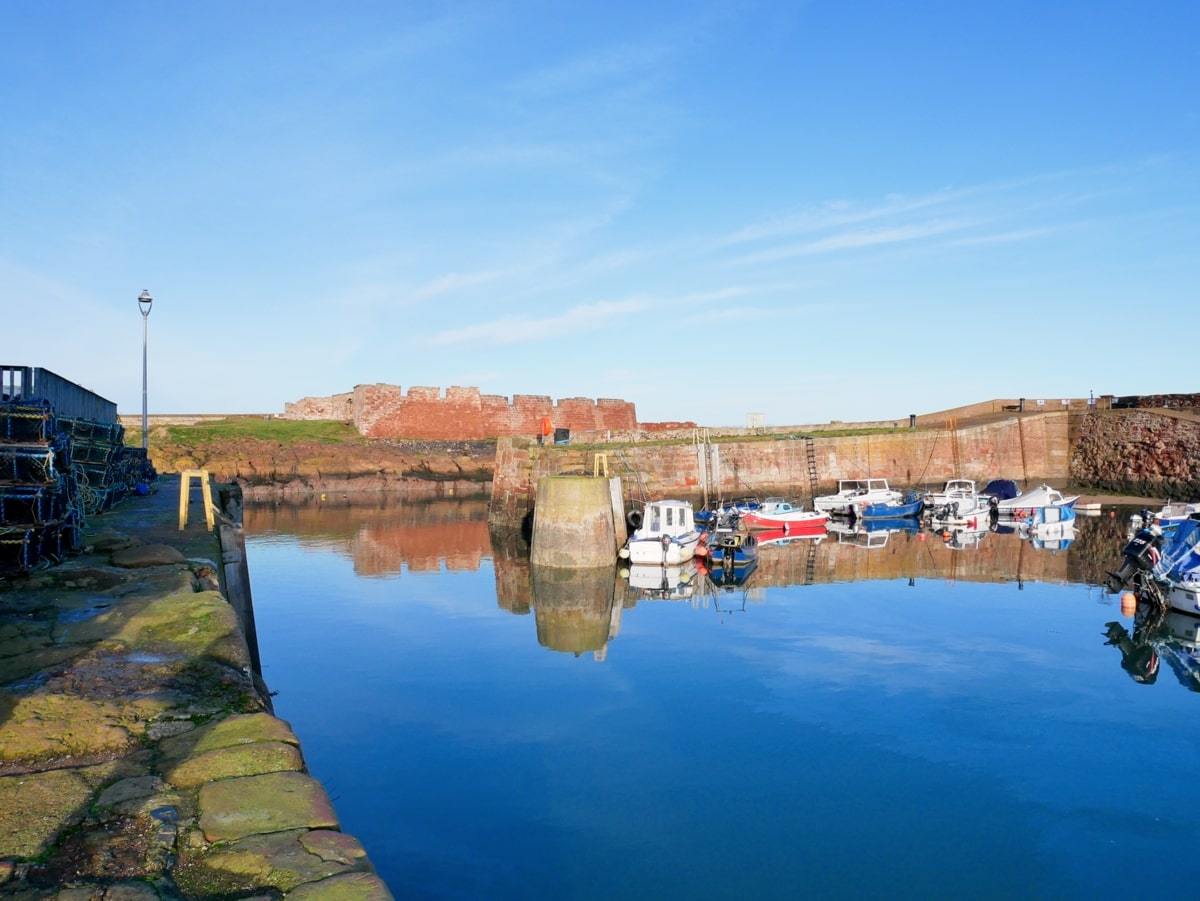
Out About Scotland Complete Guide to Dunbar Harbour
Dunbar is a small fishing town on the northeast corner of East Lothian. It’s famous for a number of attractions, including the John Muir Country Park and Victoria Harbour, but it’s also frequently visited between trips to two of south Scotland’s top outdoor attractions, Tyninghame Beach and Whitesands Nature Reserve.
Dunbar’s Victoria Harbour dates back to the 17th century, but it’s believed to have been in use for much, much longer than that, as can be seen in the remains of Dunbar Castle located at the western edge of a small promontory.
The castle was built on the foundations of older forts that are known to have existed on the site for at least 2,000 years, but unfortunately, tourists aren’t allowed in the castle to see these ruins up close. What you can do, though, is explore the restored military battery at the other end of the harbour, which offers superb views across the harbour walls and beyond to the North Sea.
The battery had a number of uses over the years, including an ammunition depot and a hospital, but today it’s used primarily as a viewing platform and as a venue for open-air concerts.
If you enjoy water sports, Victoria Harbour is a good place to set off, as it’s completely sheltered from the open water by a protective wall. It’s also a working fishing harbour, so a visit will be of particular interest to children, who will no doubt enjoy watching the wee trawlers chugging their way in and out of the harbour entrance.
A short distance away lies Dunbar town centre which offers lots of cafés and restaurants. There’s also a museum dedicated to the conservationist John Muir who went on to establish some of the largest national parks in America, including Yosemite Valley.
Dunbar Harbour is ideally placed as an extra attraction to see after a visit to nearby East Links Family Park or perhaps after a walk around the John Muir Country Park, which is just a 10-minute drive away. You can also begin a walk on the cross-country John Muir Way, which starts at the John Muir Museum and continues over some of the most scenic regions of Scotland before finishing west of Glasgow at the seaside town of Helensburgh.
East Links Family Park
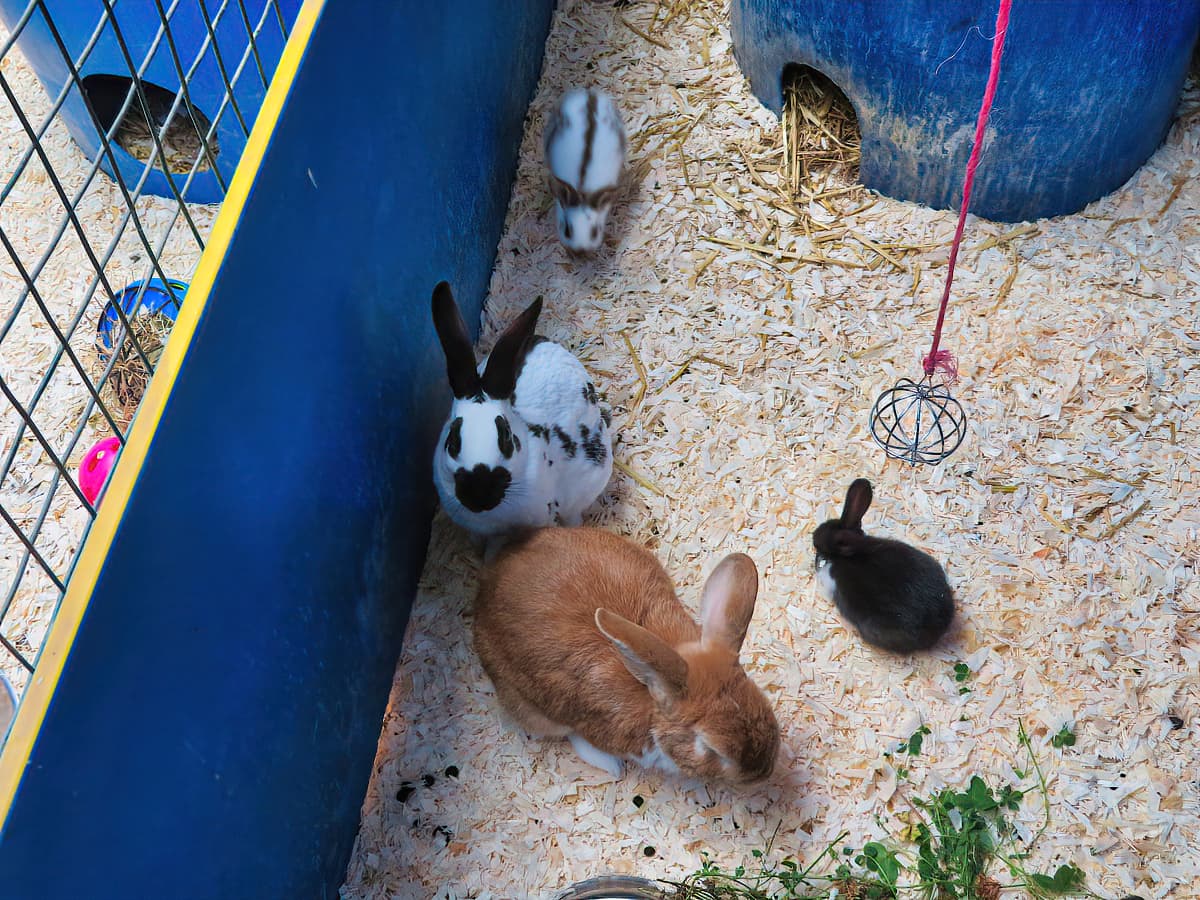
Out About Scotland Complete Guide to East Links Family Park
This park offers children a collection of fun activities where they can go wild on go-karts, water cannons, an enormous fort obstacle course, hill slides, trampolines, and much more. Adults are more than welcome to join in with pedal karts that circle the park, a farmyard petting zoo, and a mini steam train that puffs its way around animal pens where you can feed llamas, deer, sheep, and cattle.
If that lot works up an appetite there’s a restaurant where you can fill up as well as a picnic area if you’d rather bring your own snacks.
The petting zoo is one of the best I’ve seen in south Scotland and I guarantee the family will have a great time feeding the farmyard animals, so make sure you take spare change to refill multiple cups of food pellets.
If you have a young family, this is a great place to while away an afternoon, and the price is quite reasonable considering you could easily spend all day there. That being said, there are lots of other attractions in the area that are worth visiting with the kids and that have no entrance fee at all.
First off is the John Muir Country Park which is just a few minutes’ walk from East Links. The country park has a network of paths that meander through thick wild grasses, pine woodlands and sand dunes as well as allowing access to the superb beach at Belhaven Beach which is one of the most-visited outdoor spaces in the region.
Dunbar is also close at hand if the weather isn’t so great (this is Scotland after all), but if the sun’s shining, I also highly recommend driving 10 minutes north to the very pretty golden sands of Tyninghame Beach.
Protect Your Family From Scotland's Biting Midges
- Powerful, reliable protection for up to 8 hours
- Water- and sweat resistant
- Repels midges, mosquitoes, horse flies, sand flies, fleas and ticks
- Safe for use on adults, children over 30 months and pregnant women
- Non-sticky, moisturising with a pleasant fragrance
- Packaging may vary
Hailes Castle
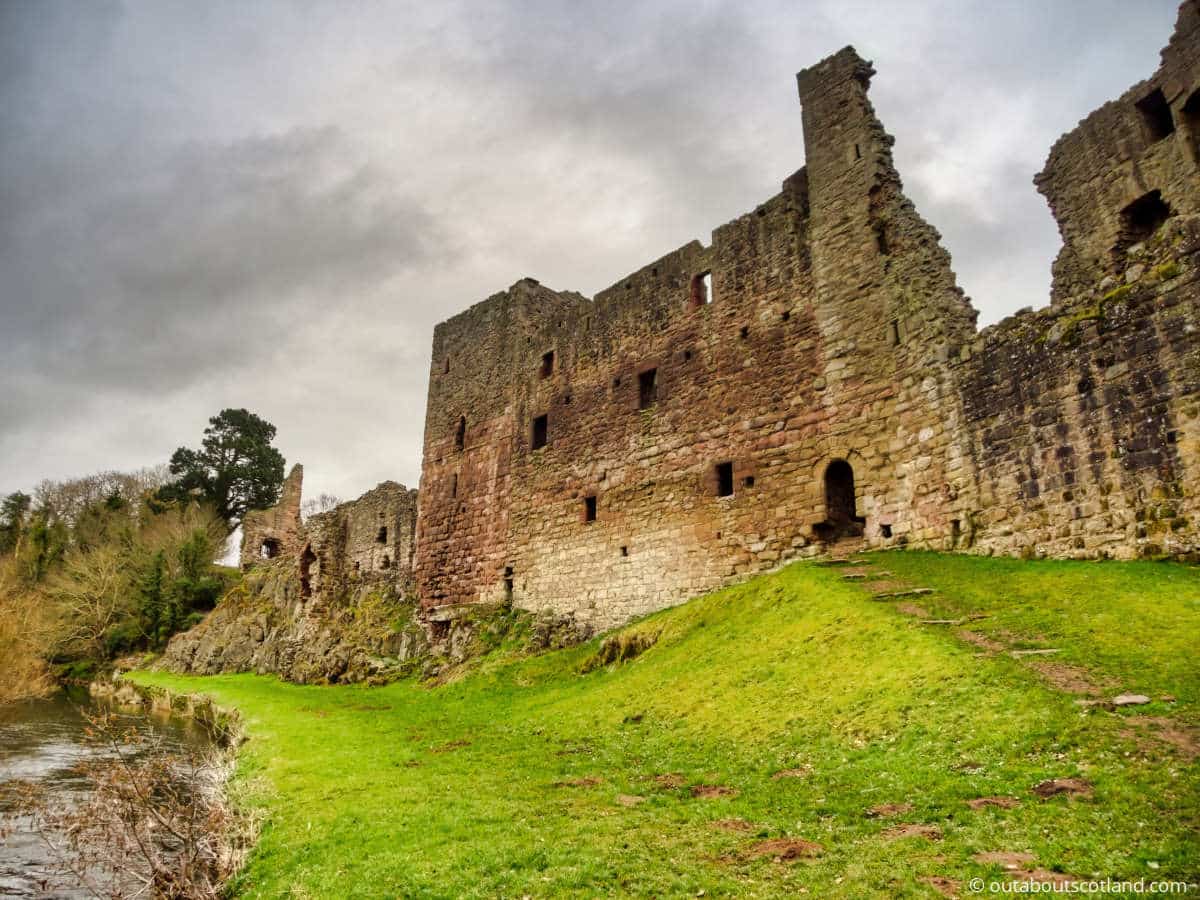
Out About Scotland Complete Guide to Hailes Castle
Each county in Scotland is chock-a-block full of castles, and East Lothian is no exception. While Tantallon Castle gets most of the attention (take a look at my Guide to Tantallon Castle to see why), Hailes Castle is often forgotten about, which is a shame because it’s a lovely place that’s one of the top hidden gems in East Lothian.
The castle sits on the banks of the River Tyne, midway between the towns of Haddington and Dunbar. It’s a bit difficult to find as the single-track road leading to it is easy to miss but there are signs pointing to it from East Linton on the A199.
When you get to the castle, you’ll immediately notice that it’s set in a very peaceful countryside setting, with the bubbling waters of the river behind it and rolling fields stretching off into the distance. It’s not exactly a hotspot of activity now, but in the 14th century, this was the centre of power for the wealthy Hepburn family, and it would have been the focal point of the region.
Today, most of Hailes Castle is in ruin and roofless, but you can still get an idea of how impressive it would have been in its heyday by climbing the steps into the great hall with its huge fireplace. There’s also a vaulted bakehouse and brewery in the basement, as well as the remains of what would have been a sizeable tower.
I wouldn’t plan much more than an hour to visit the castle but at least it’s free to get in unlike most of Historic Environment Scotland’s sites, and it’s close enough to Preston Mill and the National Museum of Flight so you can add it to the end of a visit to either of those attractions.
As a top tip, if you want to spend a bit longer in the area, there’s a nice footpath up the road that follows the River Tyne to East Linton, and Traprain Law, similar to Berwick Law but smaller, can be found across fields to the south of Hailes Castle.
Prestongrange Mining Museum
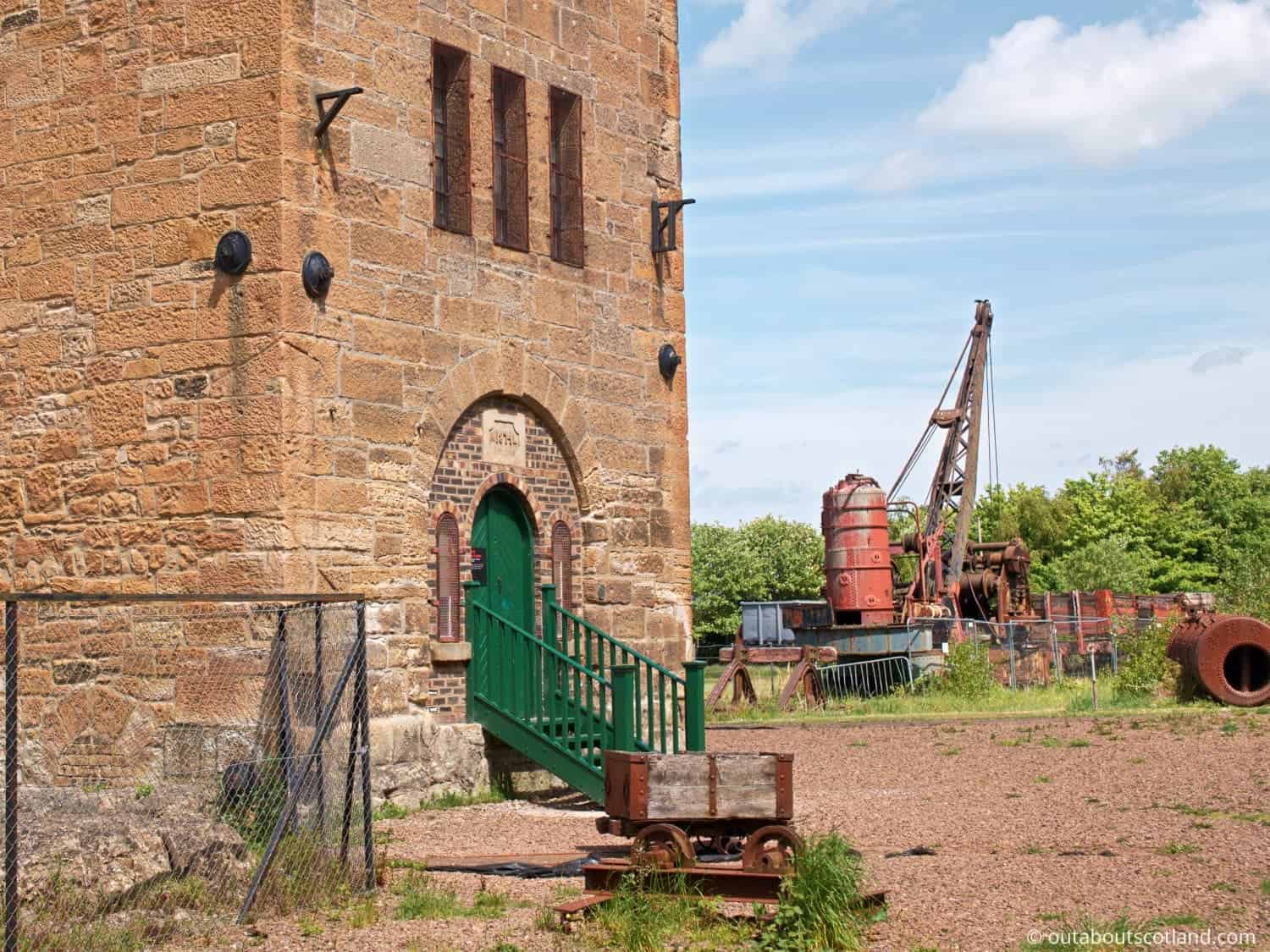
Out About Scotland Complete Guide to Prestongrange Mining Museum
Tourists rarely, if ever, visit the village of Prestonpans, but there are a number of attractions there that make for a pleasant afternoon trip, including the outdoor mining museum at Prestongrange. Prestonpans dates back at least 2,000 years, when the very first settlers used the wide banks of the Firth of Forth to dry seawater in giant pans to make salt. It was also the home of the powerful Preston family, hence the reason the village took the name Prestonpans.
Another major industry in the area (and most of East and Mid Lothian) was coal mining, and because Prestonpans had a harbour that offered easy access to the rest of the country it rapidly developed into a sizeable mining complex.
As with all coal mining in Scotland, the works at Prestongrange are now long abandoned, but the remains of the pump houses and engine sheds can be explored on a self-guided tour. Wandering around the old mining buildings is one of the more unusual free things to do in East Lothian, but it’s worth a visit for anyone interested in the county’s history, especially as there’s a free audio tour that explains each building and the role it played in the colliery.
Another often-missed attraction is Levenhall Links nature reserve which is located half a mile down the road from Prestongrange. Most of this site was originally used to deposit the spoils of the coal mine, but it has now been converted into a reserve for seabirds, and the 134-acre site includes bird hides joined by a network of paths that thread their way between woodlands and grass fields.
The final historic site to visit in Prestonpans is the site of the 1745 battle between the Jacobites and the British government forces, which was one of the most important conflicts in Scottish history. The original battlefield covers an area of farmland that’s off-limits to the public, but you can walk through it on a path that spurs off the B1361 heading out of the village.
For an elevated view of the battlefield, cross the road in the opposite direction and climb the pyramidal earthworks next to the sports centre. From there, you can see across the fields to the North Sea, and information panels will show you exactly where the battle took place and where each army stood.
Book Tours in Scotland
More Attractions in East Lothian
| Tantallon Castle | Glenkinchie Distillery | John Muir Country Park |
| National Museum of Flight | Yellowcraig Beach | Lammermuir Hills |
| Scottish Seabird Centre | Newhailes Estate | The Bass Rock |
| Dirleton Castle | John Muir Birthplace Museum | Hopetoun Monument |
| Torness Nuclear Power Station | Dunbar Harbour | Traprain Law |
| East Links Family Park | Hailes Castle | Seton Collegiate |
| Athelstaneford National Flag Centre | Prestongrange Mining Museum | Pressmennan Wood |
Frequently Asked Questions
Where is East Lothian?
East Lothian is situated on the southeast edge of Scotland, between the Firth of Forth and the Scottish Borders. The county borders the North Sea on its eastern side, while its western side borders the county of Midlothian.
East Lothian is one of 32 council areas in Scotland and is part of the Eastern Central Lowlands of Scotland.
What are the main towns in East Lothian?
Haddington: This farming town is the administrative centre of East Lothian and was once famous for the mills that lined the River Tyne.
North Berwick is a seaside town that features a quaint high street, the Scottish Seabird Centre, and several beaches.
Dunbar is a historic fishing town that was built around Dunbar Castle and Victoria Harbour. Dunbar is also the start and end point for the cross-country John Muir Way.
Musselburgh is the closest town in East Lothian to Edinburgh. Musselburgh is a 20-minute bus ride from the city centre and is a popular destination due to its seafront as well as its racecourse, which is the oldest in Scotland.
What is the weather like in East Lothian?
East Lothian is officially one of the warmest and sunniest counties in Scotland, with summer temperatures that average 20°C, 3°C warmer than averages across the rest of the country.
East Lothian also averages 1,400 hours of sunshine annually, but this number can change considerably with the arrival of the haar (a sea mist that rolls in from the Firth of Forth).
How do you get around East Lothian?
East Lothian has excellent transportation infrastructure because it is close to Edinburgh. A mainline railway joins the capital to the north of England, which runs through the county, and there are regular bus links that serve Edinburgh and the majority of the north of East Lothian.
The A1 dual carriageway allows drivers access to Newcastle from Haddington in under two hours.
Protect Your Family From Scotland's Biting Midges
- Powerful, reliable protection for up to 8 hours
- Water- and sweat resistant
- Repels midges, mosquitoes, horse flies, sand flies, fleas and ticks
- Safe for use on adults, children over 30 months and pregnant women
- Non-sticky, moisturising with a pleasant fragrance
- Packaging may vary



